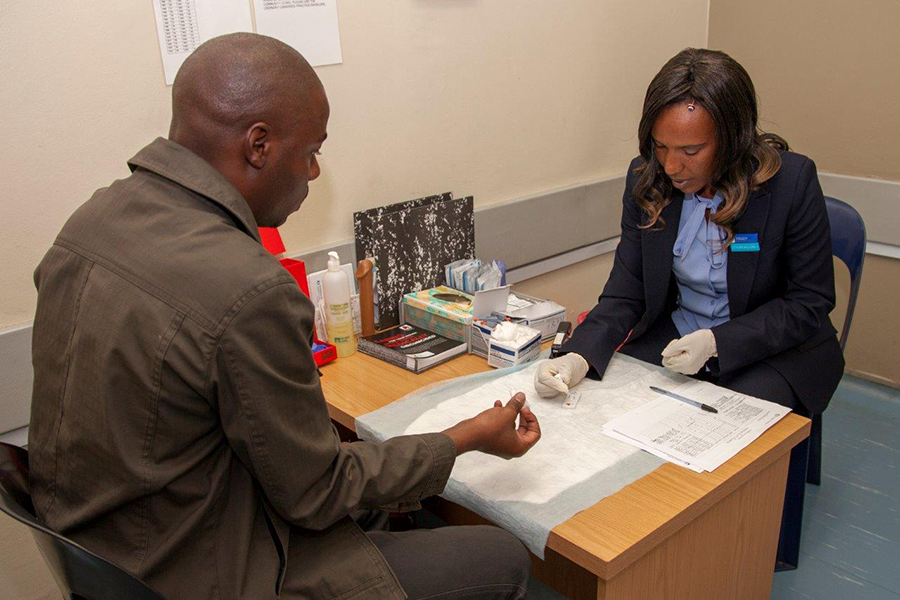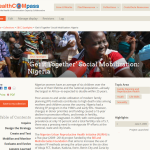Meeting 90-90-90 HIV Goals Requires SBCC To Boost Treatment Initiation
Treatment initiation, one of many behaviors along the HIV continuum, often is simultaneously influenced by multiple factors or social determinants. In order to influence these behavioral drivers, it’s important to understand them and how their complexities affect decision-making. If we as a global community are to meet the 90-90-90 targets (90% of PLHIV will know their status; 90% of those diagnosed with HIV will be on treatment; and 90% on treatment will have viral suppression), treatment scale up is paramount. With the release of new treatment guidance from WHO encouraging treatment initiation as soon as possible after diagnosis, regardless of CD4 count, practitioners and implementers alike must grapple with questions including:
- If we are to meet the 90-90-90 goals, how best may we encourage HIV testing and counseling among those who may not even know they need it or doubt they are at risk?
- How will we reach those diagnosed but ‘healthy’ when it is already so difficult to reach those who need treatment under the previous guidelines, including men and those experiencing disease progression?
- How best should programs focus their efforts to achieve the greatest impact and efficiency?
- How can we improve in-service client-provider interaction in particular to improve the counseling experience, understand the new guidelines and positively impact treatment outcomes?
- What do we understand about client readiness?
- What messages or approaches are most effective for enrolling people in treatment and encouraging adherence?
These and other pressing questions were discussed during a panel discussion held at the Johns Hopkins Center for Communication Programs (CCP) with guest speakers including Shanti Conly (USAID), Kim Seifert-Ahanda (USAID) and Chris Hoffman (Johns Hopkins School of Medicine). A host of considerations were discussed with multiple opportunities across the treatment continuum for health communication to play a meaningful role.
Moving the new treatment guidelines into practice will require considerable shifts in knowledge and understanding of the benefits of early testing and treatment. This deepening of understanding can promote uptake as more people learn their status before becoming ill. As Kim Seifert Ahanda pointed out, there is a real call to action to clearly communicate the role of health communication across the cascade to increase testing, treatment and adherence. Through approaches grounded in the local context, health communication must segment audiences identifying those most at risk with the highest rates of incidence. HIV testing and counseling is a particular priority behavior as a doorway to treatment More focused audience segmentation will become increasing important in identifying those with the highest rates of incidence. By identifying those living with the virus, supporting client readiness at both the facility and in communities, initiating treatment and providing ongoing encouragement for adherence the goal of reaching and maintaining viral suppression in line with the global 90-90-90 targets can be met.
Shanti Conly highlighted the fact that we will not achieve the last 90 (those virally suppressed) if we don’t reach the first 90 (with testing). She made the case that the biggest challenge is at the front of the cascade as only 50% of those living with HIV have been diagnosed, with men especially disadvantaged. She went on to highlight the important role of community-level platforms in reaching the undiagnosed, increasing awareness of the benefits of testing, and addressing community-level stigma among other things.
Significant barriers to accessing and staying in treatment remain as Chris Hoffman pointed out when describing the importance of client readiness and building the interpersonal communication skills providers need to be more effective and responsive to client needs. Building supportive environments in the community and within families will go a long way in ensuring those living with HIV have more support and less fear of stigma as they grapple with the long term meaning of living with HIV. At the same time, ensuring that structural barriers such as stock outs and long waiting times do not further inhibit clients from seeking services will be crucial while program implementers simultaneously ensure clients are treated well in the counseling experience.
CCP greatly benefited from the panelists perspectives as we work to understand what the implications these new guidelines will have. As a follow up to the panel, CCP will develop a conceptual framework to better understand and highlight the areas where health communication can be used most strategically across the continuum to improve treatment outcomes.








Leave a Reply
Want to join the discussion?Feel free to contribute!